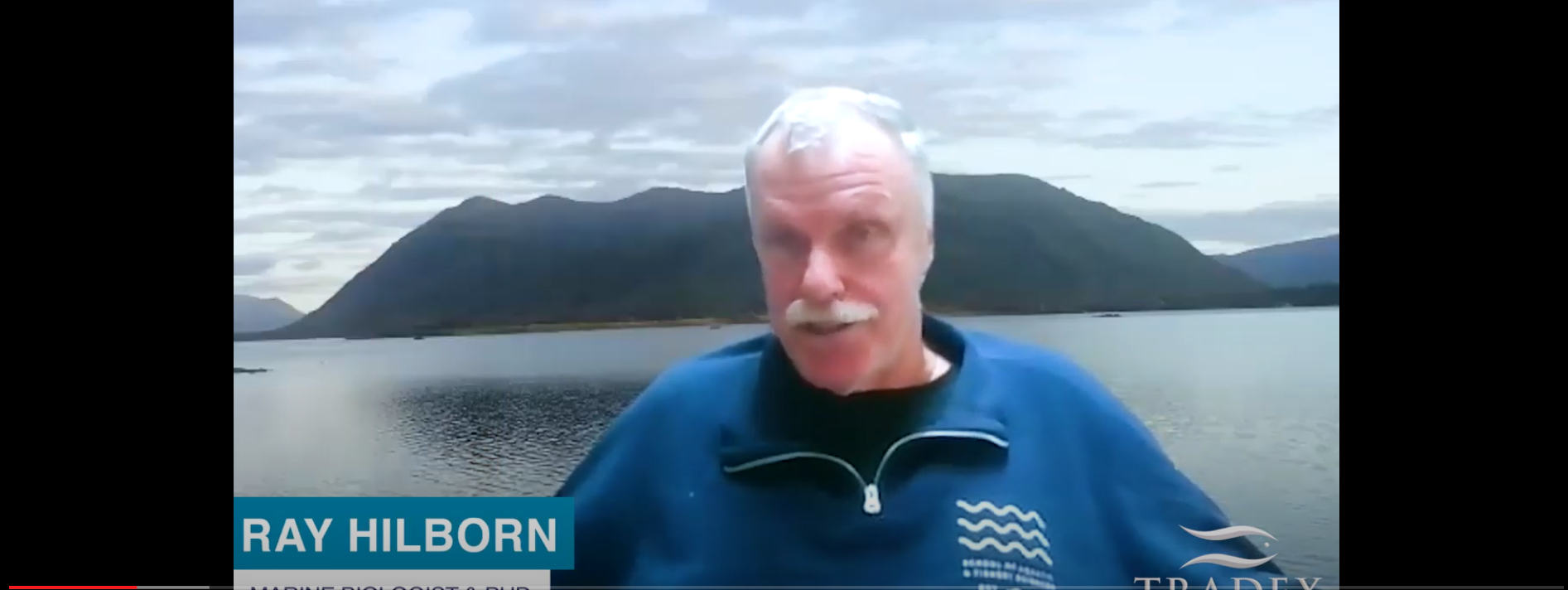
Loading
EP 488 | AIRED 05/18/2020
Ocean Optimism: Are Fish Populations Increasing or Decreasing?
May 18th, 2020 --- In this week's episode we investigate the current state of our oceans fish populations & our sustainability efforts including interviews with Ray Hilborn and the Marine Stewardship Council.
--- With proper fishery management, the numbers of our harvested species in our oceans are higher than ever.
Speaking with marine biologist & professor Ray Hilborn, he has an optimistic perspective on our fish stocks.
"The idea that the oceans are being drained of fish simply isnt true.
Certainly not in the half of the world that does fisheries management, the target species there are becoming more abundant.
And even more interesting there is some work suggesting that even if you look back 100 years, theres more fish in the sea now than there was then, due to harvesting down predatory fish which dominate the harvested species.
So their prey have become more abundant.
Certainly in the places that catch low trophic fish, there are probably more fish now than there were 100 years ago.
Alaska stands out as having very big, healthy stocks. The place that stands out for problems ins the north west atlantic, New England and Mid Atlantic have lobster & sea scallops which are doing well, but they also have a lot of groudfish that aren't doing so well.
Thats true in Canada, due to a combination due to over exploitation in the early 20th century & climate change."

--- Having healthy target fish populations is a part of keeping our oceans healthy, however efforts of organizations that uphold sustainability standards tend to put more emphasis on the environmental impacts on fishing, than population numbers.
Sustainability efforts vary widely based on location & species, and while technology increases our ability to produce the most fish we have to date, it also allows us to see the effects on our environment more clearly.
We were lucky enough to speak with Commercial & Fisheries Manager, Kurtis Hayne from the Marine Stewardship Council about the future of the seafood industry's sustainability standards:
"The MSC standard has been developped over 2o years through amulti-stake holder process, and we review our standards every 5 years to ensure it maintains the level of effectiveness we want it to.
We want to ensure it meets widely accepted best-practice worldwide.
Through this FSR process, its not required that the standard increases, it just has to meet best practice.
In this review we're looking at a few topics such as ghost gear, best practice regulation on stopping shark finning & protecting endangered species.
94% of our certified fisheries have had to make changes & improvements to their management stratgies.
Looking at population numbers specifically, we've got a few examples of increases such as the ORegon Pink Shrimp Fishery, which post-certification saw an increase of catch-per-unit of 130%.
Looking at the future of sustainability, and how MSC wishes to obtain 30% of all fisheries up to standard by 2030.
That is ambitious effort because it will mean certifying & engaging with smaller fisheries, fisheries in the global south & challenging fisheries.
What we mean by engaging is that they are just on the pathway to sustainability, not necessarily certifyable.
This includes engaging with fishery improvement project,s pathway projects or pre assessment projects, creating a pathway towards sustainability for all of these different fisheries.
We also try to engage the supply chain and partners like Tradex who try to supply & sell sustainable seafood.
I think that's a big change were seeing is the supply chain increasing engagement, which will increase the improvement on the water.
We want to award sustainable fisheries, with our eco-MSC label, which is the basis of our theory of change is strong partners, chosing to source certified sustainable seafood, and consumers looking for the MSC logo.
We hope to see some big changes in the next 10 years."

-- Proper fishery management, regulating fishing efforts and setting quotas & TAC's have been very effective means of maintaining healthy and sustainable oceans, but are they helping us meet the global demand for fish?
Mr. Hilborn explains the complicated reality of the judgment calls we have to make when it comes to the diverse species of our oceans.
"Certainly, having healthy target fish populatins is part of the sustainability.
They tend to put more emphasis on the environmental impacts of fishing.
We have the same problems, particularly in our West Coast Groundfish fishery, who fish over 100 species and close to 30 are under quota.
We've taken what I see as a misguided approach to try and regulate each of those species at a target level, and what that has meant is we've dramatically reduced the catch of our most productive stocks in order to try and get a few small stocks up to a target.
It comes at an enormous cost to food production, communities and the fishing industry."
--- Climate change also plays a huge role in the future of our fisheries.
While rising temperatures, ocean acidification & shifting oceanic 'blobs' have huge ecosystem effects, Hayne says one of the largest challenges we will face is fishery migration into other jurisdictions.
Hayne says this is where strong managment and international collaboration will become very important, as our management borders are defined, but the borders of these fish stocks & populations are not.
The future of sustainable fisheries is promising as our industry and governing parties are taking the health of our oceans seriously and the demand for seafood isn't going anywhere.
--- Tradex Foods takes sustainability very seriously, as such we monitor and evaluate our sustainable seafood harvesting very closely.
In 2019, Tradex Foods achieved a 98 percent sustainability rating for all SINBAD Branded and Private Label production combined. By the end of 2020, we plan to achieve 100 percent sustainability rating.
Keep watching our episodes as we make an effort to keep you updated on the future of our oceans & the future of sustainable fishery management.


